
 Magyarul / Hungarian
Magyarul / Hungarian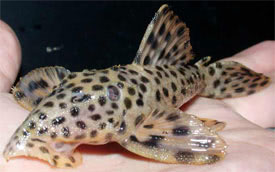
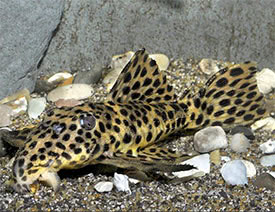

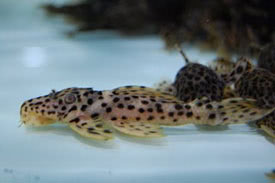
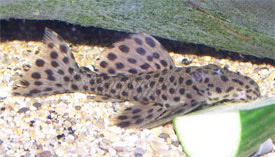
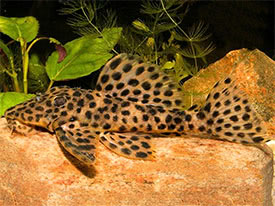
- Scientific name: Leporacanthicus heterodon
- Synonyms: L-172a Catfish, Golden Heterodon
- Common name: Golden Vampire Pleco
- Group: Catfishes
- Habitat: South America; Brazil
- Size: 15-18 cm
- Biotope: Inhabits the fast-flowing waters in Rio Xingu basin.
- Social behavior: Can be territorial and aggressive with other larger bottom dwellers, but it is relatively peaceful with those fish that inhabiting other parts of the tank.
- Diet: Omnivorous; Not a true vegetarian, it rather eats meaty foods, such as snails and mussels. It also requires some vegetable matter, and will usually accept dried foods too.
- Breeding: Breeding is possible, but rare.
- Tank: Minimum 150 litres
- Population: 1 pair for 180 litres
- Decoration: Use sandy substrate and build many hiding places of rocks and driftwood. They need highly oxygenated water with proper water-flow, and they also produce large amounts of waste, so an efficient filter is needed.
- Temperature: 23-26 °C
- pH: 6-7
- Hardness: 3-10 NK°
- Lifespan: 12-15 years
Description: Leporacanthicus heterodon has a grey to goldish colored body with black spots. The fins have the same black spotted pattern. They have two large teeth in the upper jaw that resemble to vampire teeth, and where they get their common name. These teeth are probably used during feeding, to remove snails from their shells. Leporacanthicus heterodon is is the smallest species in the genus.
Mature males have longer and broader head with small odontodes on the sides, on pectoral fin spine and on the whole body. Males also have bigger dorsal fin and a better coloration than females. Breeding is possible in aquaria of around 200 litres volume upwards, in soft to medium-hard water. Spawning can be triggered by large water changes and increasing the current. Usually only around 30-40 quite larger eggs are laid, from which the larvae hatch after 6 days. The young can be reared using flake foods, tablets and fine frozen foods. Specimens of around 12-13 cm length are often sexually mature.























































